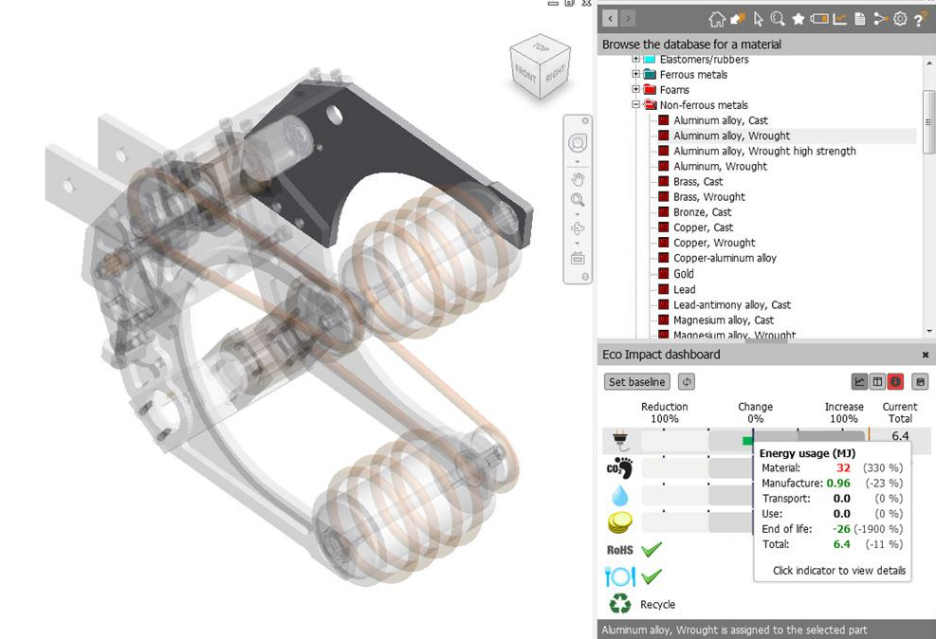You are here
Embodied Energy of Materials
A material’s embodied energy is the energy that must be used to extract, transport, and process the material. For a product that doesn’t require energy during use, like a chair, the material’s embodied energy is often the biggest source of carbon footprint and environmental impact.
A great way to reduce embodied energy is to specify recycled materials for your designs. For example, using recycled aluminum can cut embodied energy by 90%. If you’re using recyclable materials, you’ll also want to design your product to ensure those materials can be recovered at the product’s end of life. For more information, see the video on Disassembly and Recycling.
Health Impacts of Materials
Materials can sometimes also have negative health impacts, and some materials are regulated for this reason. For example, electronics sold in Europe need to meet the Restriction of Hazardous Substances Directive (RoHS). You can avoid health impacts by avoiding toxins, clearly labeling them when they are used, and designing-in product safeguards like child-proof lids. .
Tools to Identify Environmental Properties of Materials
To find data on the environmental properties of materials, you can use databases published by companies like Granta Design. The Eco-Materials Adviser tool within Autodesk Inventor has an Eco-Impact dashboard which displays data from Granta Design on embodied energy, carbon footprint, embodied water, end-of-life options, and RoHS compliance.
Students and educators can download Autodesk Inventor and other Autodesk software free of charge in the Autodesk Education Community Download Center.
Lifecycle Assessment for Materials Analysis
Conduct lifecycle assessment (LCA) on your design to dive into more detailed analysis that can help inform material choice. While more time-consuming, LCA usually includes more nuanced data on variables like ozone layer depletion, air pollution, water acidification and eutrophication, land use, ecotoxicity, and carcinogens. To learn more, see our Primer on LCA, the Okala Guide, and Sustainable Minds.



